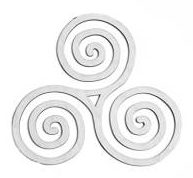
Fulacht Fiadh
In Irish Legends the ‘Fulacht Fiadh’ were described as a ‘wild or travelling cooking pit’ that was used for cooking or bathing by the nomadic Fianna Warriors. The fulacht fiadh is identified as a rectangular-shaped water trough. Fulachtaí fiadh are usually found close to water sources, such as springs, rivers and streams, or waterlogged ground. Most sites in Ireland consist of a low horseshoe-shaped mound of charcoal-enriched soil, and heat shattered stone, with a cooking pit located in a slight depression at its centre. Other theories suggest that the sites may have been used for bathing, the washing and dyeing of cloth, and leather working. Another theory is that the small buildings on site were used for enclosing heat and steam in a manner similar to the Tigh ‘n Alluis Gaelic sweat-houses (which were built of stone). While others suggest that fulachtaí fiadh were used primarily for the brewing of beer.

Tigh ‘n Alluis
Ireland also has a very old tradition of sweat houses called ‘Tigh ‘n Alluis’, meaning ‘houses of sweat’.
Traditionally built in the form of a beehive hut and made of dry stone walls, covered in clay and turf. They had straw or grass sods to sit or lay on and usually had a small opening at the roof and a single low doorway, that was covered by flag stones when the warriors were in side.
Two main methods of heating the huts were firstly by a large peat fire and secondly by bringing in heated bricks from outside. Water was then splashed onto the stones and certain herbs were also in haled during the sitting and a cold pool was outside about five feet deep to plunge into once finished with the heat.
The ulacht Fiadh or Tigh ‘n Alluis were a known treatment or all kinds of illnesses including rheumatism and common colds.
